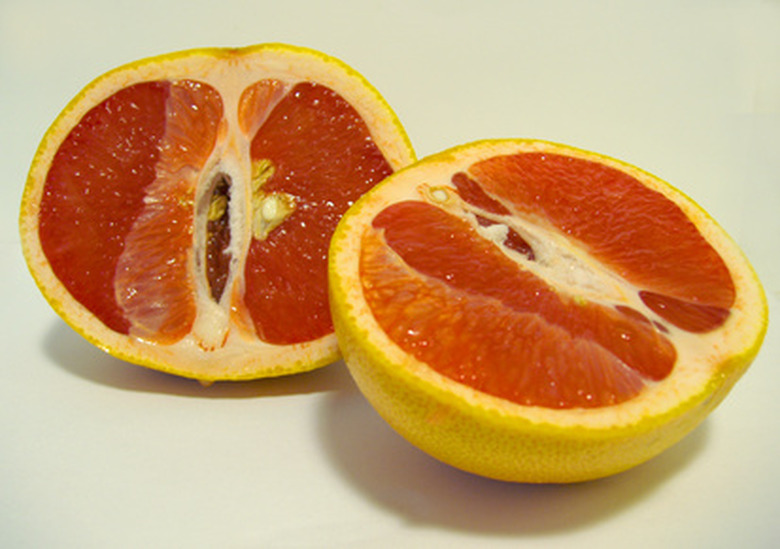How To Take Care Of A Grapefruit Tree
Things Needed
- Garden hose
- Ammonium sulfate
- Herbicide
- Heavy duty aluminum foil
- Soil
- Shovel
- Blanket or tarp
Originating in the West Indies from a mutation of pummelo, grapefruits are large citrus fruits with usually rosy-red, juicy and somewhat tart flesh. Many common varieties of red grapefruits are seedless and have a sweeter flavor. Grapefruit trees grow best in regions with hot daytime temperatures and warm to hot nights. These trees aren't quite as cold-hardy as orange trees, withstanding minimum temperatures of only 25 to 30 degrees F at the coldest. With the right climate and care, grapefruit trees bear heavy fruit crops, generally producing up to 250 pounds of fruit by the time the tree is 10 years old.
Step 1
Water your grapefruit tree slowly and deeply once every two weeks. Water newly-planted grapefruit trees once every two to three days for the first three weeks, gradually decreasing the watering frequency to once every seven to 10 days during the next three to four months.
- Originating in the West Indies from a mutation of pummelo, grapefruits are large citrus fruits with usually rosy-red, juicy and somewhat tart flesh.
- With the right climate and care, grapefruit trees bear heavy fruit crops, generally producing up to 250 pounds of fruit by the time the tree is 10 years old.
Step 2
Feed your grapefruit tree each year with 1 cup of ammonium sulfate (21-0-0 NPK formula) per year of tree age. Divide the fertilizer into three separate applications in February, May and September.
Step 3
Keep all grass and weeds 12 inches away from the grapefruit tree's canopy area by hand-pulling the weeds or applying an appropriate herbicide weed killer. To protect the tree from chemical damage, wrap the trunk from the ground level to the first set of limbs with an 8-by-18-inch piece of heavy-duty aluminum foil.
Step 4
Protect your grapefruit tree from winter cold by mounding up a bank of soil around the trunk. Create the soil bank in late November, and then remove it carefully in early March.
Step 5
Remove all grapefruits that emerge on one- and two-year-old trees, to encourage the grapefruit trees to invest all energy into healthy growth and establishment. In mature trees, harvest the grapefruits from late October until May, when the fruits reach their desired color.
- Feed your grapefruit tree each year with 1 cup of ammonium sulfate (21-0-0 NPK formula) per year of tree age.
- To protect the tree from chemical damage, wrap the trunk from the ground level to the first set of limbs with an 8-by-18-inch piece of heavy-duty aluminum foil.
Tip
Protect your young grapefruit trees from freezes and frosts by draping a blanket or tarp over the tree. Ensure that the blanket covers the entire tree, and remove it in the morning after the temperatures warm back up.
Warning
Don't mulch around the grapefruit tree, because this can cause incurable foot and root rot diseases. Also, don't begin fertilizing the grapefruit tree until new growth emerges after planting it.
